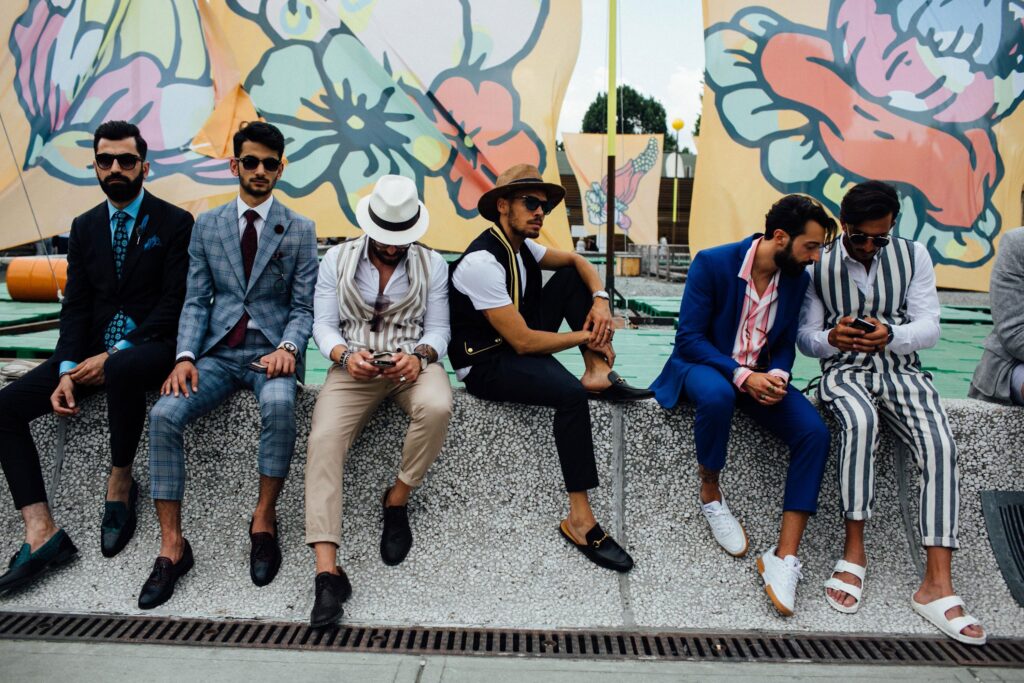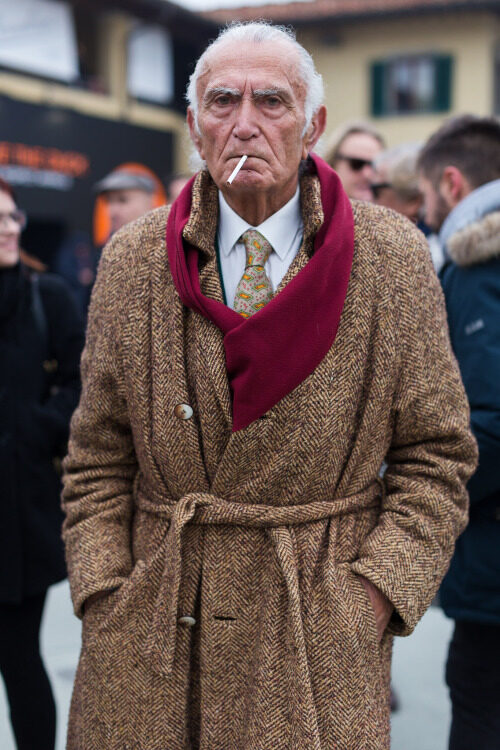A Perfect Word for Willful Imperfection

English is a mutt of a language. Cobbled together over centuries from various European ancestors, English has relied on a wonderful habit of stealing words with no direct translation. In that way, English has become a sort of showcase for fun and useful words from other languages. My favorite example of this pilfered phraseology is Sprezzatura. Just like the Statue of David, the ceiling of the Sistine Chapel, or the Moka Pot, this beautiful work of art could only have come from Italy. Sprezzatura gleefully rolls off the tongue and looks eloquent written out. No combination of syllables native to the English language is nearly as fun to say as Sprezzatura.
The standard definition of Sprezzatura is, “studied carelessness; especially pertaining to fashion, art and literature.” The word can be traced back to a 16th century book by Baldassare Castinglione laying out the rules for gentlemen to dress and behave by in Renaissance Italy. Castinglione believed that gentlemen should avoid pretension by appearing to give minimal effort to their appearance yet maintain a formal dress code. In modern times, it’s been an aesthetic practiced by insouciant prep school and university students in the Anglo-American world. A similar fashion developed in the warmer Mediterranean climates like Spain and Italy where layered formalwear has been undone in various combinations to alleviate the heat. In both cases elements of formalwear were rearranged, discarded, and intermingled with casualwear. These moves were always calculated with feigned nonchalance.
In regards to art and literature, Sprezzatura simply gives a name to artists’ disregard for authority and social norms. A painter, sculptor, or poet’s method and workspace may appear disorganized and chaotic from the outside but everything is precisely where the artist means it to be. Even to the laymen, a poem scribbled on a piece of paper in messy handwriting appears more artistic than an edited and printed finished work.

An artist’s job is to hold a mirror up to society and Sprezzatura does that by pointing out the frivolity of placing rules upon things like fashion and literature. These modes of self-expression should never be rigidly hemmed in. Rules and conventions are explicitly broken to point out that beauty still exists without them. However, there is method to the madness as every detail is considered. While some rules are broken, others are obeyed to maintain balance. As for what rules to break, that is always a matter of feeling.
I cannot, in good conscience, go any further without thanking my friend Ken Camara for introducing me to my new favorite word not too long ago. It is hard to believe that I spent nearly a decade working in menswear before learning of Sprezzatura. After he told me about it, I spent the rest of the day saying it out loud. Learning Sprezzatura resonated with me because I relate to it so strongly. It’s been the perfect descriptor for my personal style ever since I’ve had a personal style. It would be like spending most of your life morally opposed to eating meat and then learning the word Vegetarian.
I developed a taste for Sprezzatura around middle school when I first took notice of fashion in general. My mother dressed me in L.L. Bean, Lands End and Ralph Lauren for most of my childhood. This rooted my style in classic preppy that I could run from and return to time and again. As a teenager, I rebelled against my upbringing by taking to skate and surf brands and emulating punk rock bands when I began making my own wardrobe decisions. Traditional wardrobe pieces were repurposed with rips, paint, studs and pins. I reached peak skater-punk in 9th Grade when I bleached my hair platinum blonde and my mother threatened to disown me.
My sartorial pendulum began to swing back toward preppy and eventually settle in a middle ground during high school. My formative years coincided with the hay day of Abercrombie & Fitch. Abercrombie built their empire on the American iteration of Sprezzatura combined with as much sex appeal as the FCC would allow. Informed by the classic Ivy League aesthetic of rich kids wearing their parent’s clothes in their own way. Every look either had too many layers or not enough. Accessories were precisely out of place. Buttons were always undone, ties untied, and jackets hung off the shoulder. Abercrombie’s influence was so strong that even the founder of modern American Prep, Ralph Lauren, followed their lead with excessive on-apparel branding and over sexualized marketing.

My first job in college was at the Abercrombie in my local mall. For two years, my wardrobe consisted almost entirely of Abercrombie as I gave most of my paychecks right back to my employer. By the time I left the company I had oversaturated myself with the brand. At the same time, Abercrombie’s popularity waned from progressive lawsuits, PR missteps and a refusal to evolve with the cultural zeitgeist. It was at this time that I revisited my roots by getting into Polo, J.Crew and classic European preppy brands. Being a college student, I would shop clearance and wait for that second and third price markdown before I could afford anything. I gradually learned how to gather pieces from multiple brands to assemble my wardrobe rather than buy wholesale from one brand as they marketed it.
By the time I graduated from college, the 00’s menswear revolution was in full swing. Suiting was slim, jeans were skinny, tees were tight, and workwear was everywhere. Hipsters proliferated vintage clothes and facial hair. Ralph Lauren Rugby had taken the collegiate-prep Sprezzatura crown surrendered by Abercrombie. For the first time in my lifetime, it became cool for men to get into fashion on a broader scale than what was available at the mall – just as malls were dying a slow painful death.
This was the fashion world that I entered professionally. J.Crew hired me to be a merchandising assistant in 2012. J.Crew’s Mens line was at its pinnacle in the fashion world. I was fortunate enough to work with and learn from brilliant colleagues with immense experience in the industry. As I progressed with the company I met dozens of men and women from various professions. I picked up tidbits of wisdom here and there as I came across them, developing my personal style along the way.

Sprezzatura remained the common thread throughout my sartorial evolution. I journeyed through disparate fashion realms, dabbling in each with the same disregard for conventional rules. Bits and pieces of each genre remained with me as I carried on. My personal style has coalesced into a patchwork that works for me and only me. That individuality is the soul of Sprezzatura. Take an art form, learn all the rules, and then break the ones that don’t work for you. Take different schools of thought and blend them together to express your own thoughts. Take a few old things and make something new.
Sartorially, Sprezzatura is akin to jazz and poetry. One must learn the rules of literature before they go ahead and break them with poetry. Jazz appears to be freeform expression but it lives within the confines of the octaves. So too is it crucial to educate yourself on the history and tendencies of style before contorting them to your own reflection. Sprezzatura is a beautiful means of self-expression, achieved through years of careful study in whichever medium you choose to apply it.
There have been many attempts to layout rules for the practice of Sprezzatura in style but I believe that they are all missing the point. Sprezzatura cannot be learned in a rulebook like so many forms of etiquette. The study must come before the carelessness. The spirit of Sprezzatura lies in feeling out which rules to bend and which to break and how to maintain balance in doing so. Only one rule can ever apply and that is to follow your instinct. When your clothes and accessories just feel better slightly askew, you’ll be practicing Sprezzatura properly.
